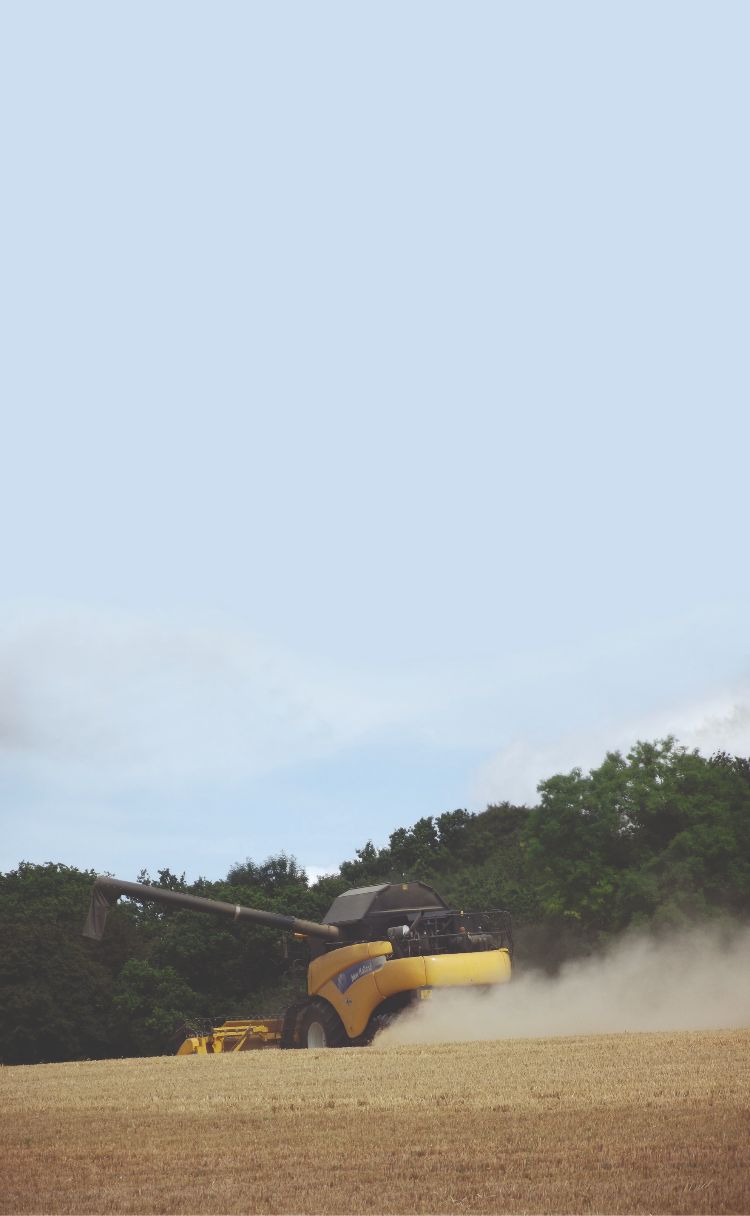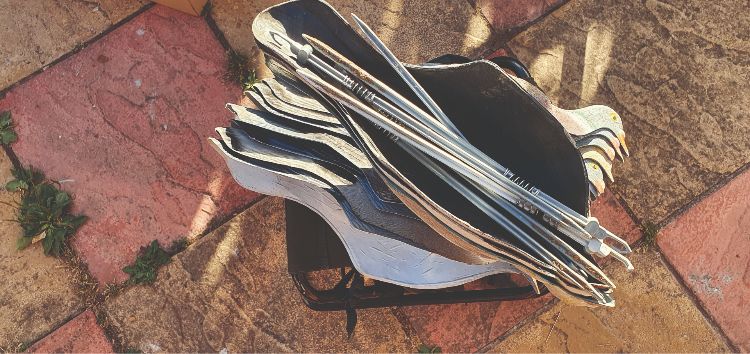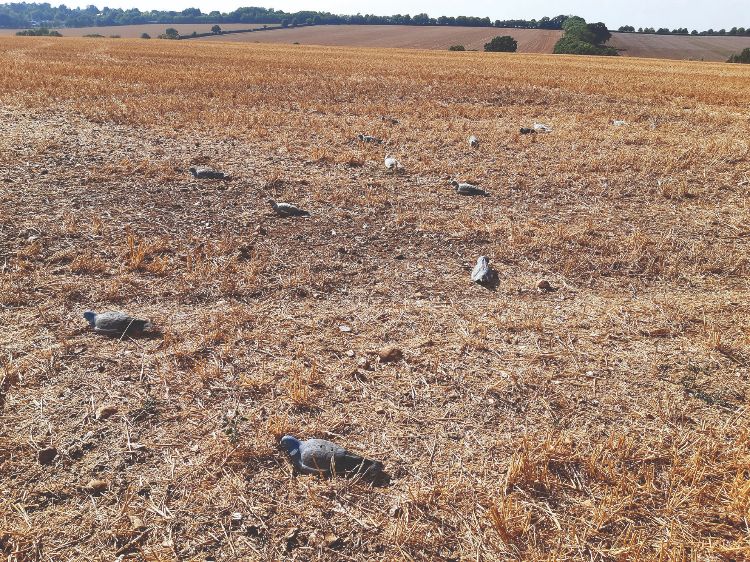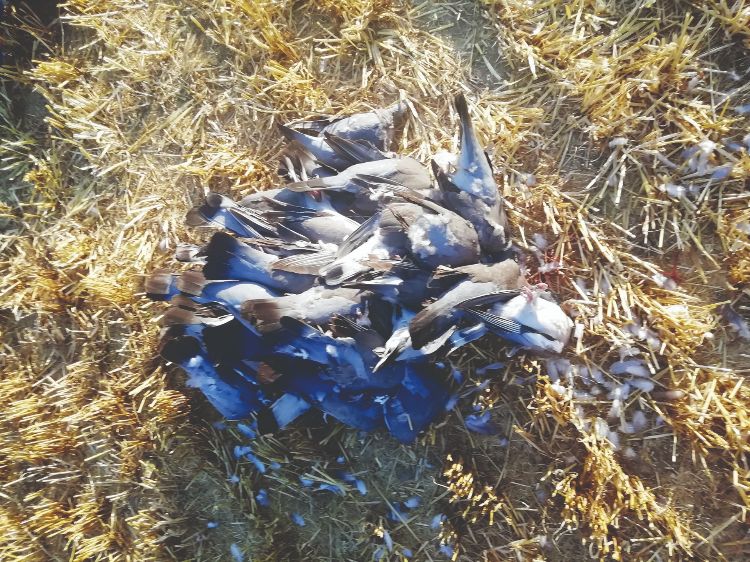Our perception of time speeds up as we get older. Waiting a fifth of your life for your sixth birthday to come around is mind-bending compared to waiting two per cent of your life to jump from 49 to 50. I bet most people's first teenage romantic relationship only lasted at maximum of a few months, but felt like a lifetime, whereas a friend of mine in her 30s sees her three-month relationship as barely started, and the beau in question not even considered, let alone invited to family events, because they’ve been together for less than the blink of an eye.
This year has been crazy in terms of one of the longest, warmest dry spells, possibly droughts, by the time you read this, on record. There hasn’t been significant rainfall since early June, with July seeing less than 40% of normal rainfall and August predicted to be similar, although possibly going out with a bang, but probably not down here in Hampshire.
All of that current weather anomaly, but possibly the norm as we move forward, has shaken the normal farming calendar, and this year, the harvest on my main farm permission flew. A normal year would see three or four separate spates of cutting; oil seed rape in mid- to late July, wheat a week or two later, beans after that, and spring barley toward the end of August. A whole 6-8 weeks of being able to decoy over stubbles, protecting the still to be harvested crops to begin, and the new rape shoots by the end. Meanwhile, my freezer would be stocked for leaner months ahead – everyone wins!
 ARE THE COMBINES OUT!
ARE THE COMBINES OUT!
In late July, I phoned the farmer to see if the combines were out because I’d seen a few start locally, and was told they would be in the next few days. Seven days later, when I called to see if I could try a day on the rape stubbles, I was told that bar the beans, the harvest would be done in two days, and they’d be cultivating ready for the oil seed rape to go in almost immediately – and it was only July 28th!
That was a proper ‘blink of an eye’ moment. Married to a farmer’s daughter and having worked on and around farms for years, I’ve never known a faster harvest. Apparently, some farmers are losing crop value because their year’s work over-ripens and is downgraded whilst waiting for flat-out contractor combines to fit in their harvesting. Most years cause a worry about too much moisture in the crop, or it being two wet to combine, but this year was the first reversal I can remember.
SPURRED INTO ACTION
This really shoved me into action because I’ve always seen a few long, warm sunny days of pigeon decoying as a reward for the freezing nights spent in dirty barns shooting rats. I needed to clear a day with my wife on the ‘never to be questioned’ joint calendar, then double check my decoying kit from spring drillings – I’ve stopped guiding for this year, and have just let it sit there – and then get out!
There is a school of thought, mainly held by knuckle dragging, bang-stick-loving, empty-cartridge-leaving ‘other shooters’, that for some reason, decoying pigeons with an airgun isn’t worth it as a pest control exercise, or not ‘sporting’ – mainly, it should be left for them. Frankly, these hefty fore-browed Neanderthals, possibly high on cartridge fumes are wrong. Not only can an airgun be as productive as a shotgun, but the fieldcraft and skills we require to achieve this is also far higher. We need our decoys to encourage pigeons to land before we shoot, not just fly over our decoy patterns; we also need our hides to block far more of our movements than someone with a shotgun, and both of these things only come with experience.
 SPECIFIC PREFERENCES
SPECIFIC PREFERENCES
Having practised building a hide in my garden the night before, to make sure I’d got the dimensions and depth of netting right, I bolted to the farm the next morning. The combines were finishing off a last field of barley, but apart from that, there was really only stubble and beans left, plus the plots of recently sprouted game cover.
I watched several fields for a while to see if the pigeons had any specific preferences, but the normal flocks, concentrated in one field, had broken and been split over most of the 400 acres of stubble. Eventually, using past experience as a guide, I settled on a corner of a wheat field where I’d watched quite a few pigeons head to, not just to graze, but also to sit up in the wood beyond, out of the heat.
I threw out 18 shell decoys in a random, comma-esque pattern, the nearest at 15 yards, and furthest 35 yards from where I was going to build my hide. I put a bouncer with a flapping decoy 60 yards behind it into the wind, and then built my hide pole and netting box hide with a roof, which takes all of ten minutes. I popped in the shooting sticks and stool, then parked the car 100 yards or more away, stuffing a shirt pocket with 50 pellets and loading up my TX200 before heading back and settling in the hide, with a head net on.
THE FIRST TEST
Comfy and almost shaded in my hide, I sat with the gun on the sticks and waited for my first opportunity. This is the beginning of the magic of airgun pigeon decoying for me – the first test of my pattern, hide, positioning and fieldcraft skills in general. The first sounds of pigeons overhead lights the litmus paper of my adrenalin, but moving sharply to look will be detected and a panicked, clapping wing beat will sound an alarm to others, so staying still and minimising movements is still key.
I could hear pigeons overhead and the whooshing of air through wings as they dropped down to have a look. My neck hairs started to stand. The first eight or so flew over into the wood behind, then three landed, but out of range at 75 yards or so, and out of my limited arc of fire off the sticks, had they been nearer.
Finally, a flying fillet steak landed in my pattern. My right hand was under the fore stock and my left on the trigger before it had hit the deck, and with a well-placed shot to the neck, I had one in the bag. As quickly as I could, I reloaded, leaving the pigeon where it had fallen.
 WORKING PATTERN
WORKING PATTERN
I only had to wait five minutes before three more dinner invitees dropped into my pattern. I shot the one which caused me to move least, and one flew off, whilst the third flitted just a few metres back. If I’d had a PCP, it would have been next, but with my reloading movements, it too flew for the safety of the sky. Two in the bag and the pattern was working a treat.
There was a lull of 20 minutes before four more pigeons flopped into the pattern. I’d watched them come in from the right and was on the middle one at 30 yards, dropping it cleanly with another neck shot. A quick reload and wait – followed by more action, followed by reload, followed by action … I’ve had some terrible fails when decoying pigeons, but today was going well, even without the benefit of a fast-cocking, 10-shot PCP.
 AMAZING SPECTACLE
AMAZING SPECTACLE
I tidied up the pattern, ran eight of the dead pigeons to the car and a cool bag to keep the meat fresh, then continued with the pigeons offering some fantastic sport – and an amazing spectacle of air acrobatics by those that caught on just as they were about to land. This is why it’s so addictive – one good day and you're hooked again!
I got to 20 on the clicker and checked the time. I’d started at 10am-ish, it was now 3pm and the sun felt like it was baking me from the inside out. I was almost out of water, and the few sips left tasted hot and dusty, so I took two more pie-fillers and called it quits. I’d had a great day and could feel my enthusiasm pouring out the same pores as the sweat drenching me. I guess if I’d taken a PCP I could have doubled my bag – plus, but I certainly wouldn’t have enjoyed myself any more. There’s something so life affirming about harvesting your own meat, and knowing that you will have enough for a while.
I called the farmer to say thanks and bye. He’d totally forgotten I was there, and was going to warn me off that field because he’d had complaints from a footballer WAG, who lived just about a 200 yards behind my hide, about the noise of guns and shot falling on her roof, in the past. Just shows – the right tool on the right day can produce the right result!